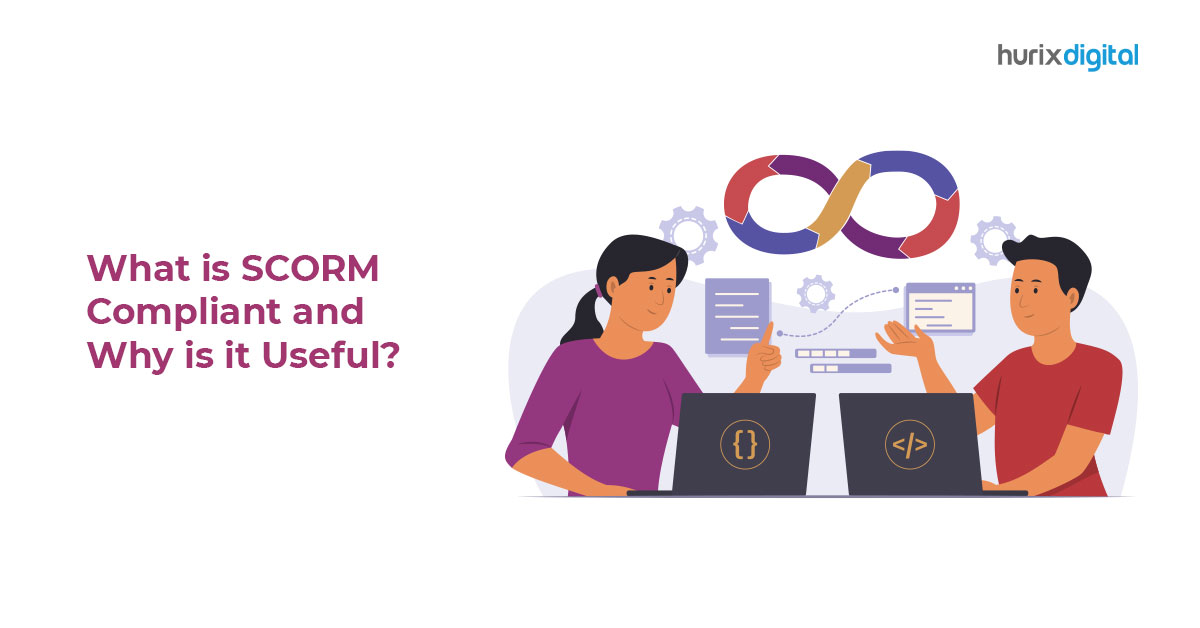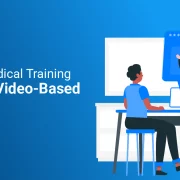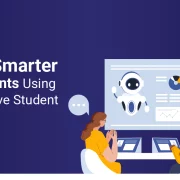
What is SCORM Compliant and Why is it Useful?
Summary
This article explains the concept of SCORM compliance, discussing its usefulness in ensuring eLearning content compatibility, reusability, and consistency across different learning management systems.
SCORM, short for “Sharable Content Object Reference Model,” refers to a set of technical standards that define how online learning content can be shared and used across different platforms and systems.
SCORM compliance ensures that e-learning content can be easily shared, reused, and integrated into a variety of learning management systems (LMS) and other platforms.
A Software Advice survey found that 62% of companies employ SCORM training in their LMS. Moreover, according to a report by MarketsandMarkets, there will be
- an increase in demand for personalized learning,
- a growing need for reskilling and upskilling, and
- an increase in the adoption of mobile-based learning driving growth.
It is also found that SCORM remains the dominant standard in the e-learning market, but newer standards, such as xAPI and cmi5, are expected to gain traction in the coming years.
In this article, we’ll explore what SCORM compliant means and why it’s useful.
What Does SCORM Compliant Mean?
To be SCORM compliant, e-learning content must adhere to a set of technical standards that ensure interoperability and compatibility with different LMS platforms and systems. These standards are discussed below.
1. Packaging
SCORM-compliant content is packaged as a self-contained unit that includes all the necessary files and resources required for the content to run properly.
This packaging ensures the content can be easily shared and imported into different LMS platforms.
2. Metadata
SCORM-compliant content includes descriptive metadata that provides information about the content, such as the title, author, and description.
LMS platforms use this metadata to manage and organize the content.
3. Navigation
SCORM-compliant content includes a standardized navigation system that allows learners to move through the content in a logical and intuitive manner.
This navigation system ensures that the content is consistent across different platforms and systems.
Communication
SCORM-compliant content uses a standardized communication protocol that enables the content to communicate with the LMS platform.
This communication protocol ensures that the LMS can track learner progress and provide feedback and assessments.
Why is SCORM Compliance Useful?
Easy Content Sharing
A primary benefit of SCORM compliance is the ease with which you can share e-learning content across different platforms and systems. SCORM-compliant content can be easily exported from an LMS and imported into a different one without any loss of functionality or content.
This makes it easy for organizations to share and reuse content, reducing the time and resources required to create new content from scratch.
Standardization
SCORM compliance ensures that e-learning content is standardized and consistent across different platforms and systems. This means that learners can move between different systems and platforms without learning a new navigation system or interface.
Standardization also makes it easier for LMS platforms to manage and organize content, reducing the risk of errors or inconsistencies.
Improved Learning Outcomes
SCORM compliance enables LMS platforms to track learners’ progress and provide feedback and assessments. This tracking and feedback enable organizations to identify areas where learners may be struggling and provide additional support or resources.
In turn, it leads to improved learning outcomes and higher retention rates.
Cost Savings
SCORM compliance can also result in cost savings for organizations. By enabling content sharing and reuse, organizations can reduce the time and resources required to create new content from scratch.
SCORM compliance also reduces the risk of compatibility issues, which can be costly to resolve.
SCORM Versions
- SCORM 1.1 – Basic set of specifications for e-learning content creation, limited tracking capabilities.
- SCORM 1.2 – Widely used version, includes tracking learner progress, recording assessment scores, and enabling bookmarking of content.
- SCORM 2004 – More advanced version with sequencing and navigation, more advanced tracking capabilities, and the ability to track learner interactions with specific learning objects within a course.
- SCORM 2004 2nd Edition – Minor updates to SCORM 2004, including improvements to sequencing and navigation of content.
- SCORM 2004 3rd Edition – Updates to tracking and reporting of learner data, support for new types of learning content.
- SCORM 2004 4th Edition – Improvements to sequencing and navigation of content, support for new types of learning content like virtual reality and augmented reality.
- SCORM 2.0 – More flexible and extensible than previous versions, including support for new types of learning content like social learning and mobile learning.
Most Relevant Versions of SCORM in 2023
As of 2023, the most relevant versions of SCORM are SCORM 1.2 and SCORM 2004 4th Edition.
SCORM 1.2
SCORM 1.2 is the most widely used version of SCORM and is supported by most learning management systems (LMS). It is a robust and reliable standard that provides basic tracking and reporting capabilities, including tracking of course completion, learner progress, and assessment scores.
SCORM 1.2 is also relatively easy to implement and does not require extensive technical knowledge.
SCORM 2004 4th Edition
SCORM 2004 4th Edition is the latest version of SCORM and includes several improvements and updates over previous versions. It provides more advanced tracking and reporting capabilities, including support for tracking interactions with specific learning objects within a course.
It also includes support for newer types of learning content, such as virtual and augmented reality.
However, SCORM 2004 4th Edition is not as widely supported as SCORM 1.2, and some LMS platforms may not support all its features.
What To Choose?
When choosing a version of SCORM for your e-learning content, it is important to consider the capabilities of your LMS platform and the specific needs of your learners.
SCORM 1.2 is a safe and reliable choice for most e-learning programs, while SCORM 2004 4th Edition may be more appropriate for programs that require more advanced tracking and reporting capabilities or that use newer types of learning content.
However, it is always a good idea to check with your LMS provider to determine which version of SCORM they support and to ensure that your content is compatible with their platform.
Conclusion
SCORM compliance is a set of technical standards that ensure e-learning content can be easily shared, reused, and integrated into various LMS platforms and systems.
SCORM compliance offers a range of benefits, including easy content sharing, standardization, interoperability, improved learning outcomes, and cost savings. By adhering to SCORM standards, organizations can
- ensure that their e-learning content is compatible with different systems and platforms, and
- enable effective and efficient training and development programs for their employees.
Ready to make your e-learning content SCORM compliant? Contact Hurix today to learn how our digital content solutions can help you create engaging and effective e-learning experiences that meet the latest SCORM standards.

A highly enthusiastic and motivated sales professional with over twenty five years of experience in solution selling of training-related applications and services. Maintains an assertive and dynamic style that generates results. Ability to establish long-term relationships with clients built on trust, quality of service and strategic vision. Specializes in financial services, higher ed, publishing and government in the areas of learning and development.



